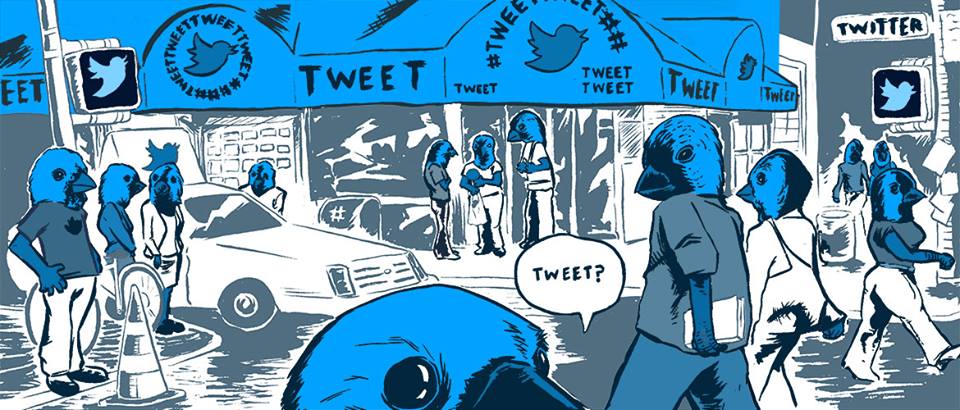Refill the SEO juice on your old articles by using a twelve-month plan of content recycling on Twitter.
Illustrated by David Flanagan
I’ve been working with Mequoda, a marketing, training, and web development company for magazine publishers, for more than seven years.
One of the things I love about them, and one of the reasons why we’ve gotten to work with the likes of publishers like Men’s Health and Time Inc., is because they are so incredibly research-, testing-, and numbers-driven. The number of reports that Mequoda pulls together on a daily and monthly basis would make your head spin. Everything they design, and every piece of content they/we write is so expertly thought out and measured, that it’s no wonder their clients sing them from the rooftops. Mequoda events are filled with the most passionate business leaders I’ve ever had the pleasure of surrounding myself with. And those people attend year after year because Mequoda makes publishers rich on a regular basis. Seriously.
One of my favorite reports from Norann Oleson, their Analytics Program Manager, tells the story of every keyword Mequoda gets ranked for, which article is ranking mostly highly for that keyword, and how high it’s ranking.
This report allows me to also see the increase and decrease of those rankings, and Norann always includes a nice little drop out of the firehose that gives a simple overview of which 10 articles rose in rank the most that month, and which ones lost the most rank.
Most of the articles that lose rank have been sitting on the first page of Google for a long time – years in some cases. They’ve been sending hundreds, sometimes thousands, of page views per month. Because of this, any drop is definitely noticeable, and we don’t want to lose that.
And we do have other strategies that we use to refresh those articles in other ways, for example, updating the articles and actually refreshing them. But, during the past few months, I’ve been doing something that’s a little quicker, and possibly even more effective.
I’ve been taking the “bottom 10 articles” list Norann sends me and recycling the posts on Twitter in a fairly strategic and systematic way.
My process for recycling these old articles and bringing back their SEO juice is this:
- Take all of the articles (they were already SEO’d by the way) and 12 new headlines for each. This doesn’t involve updating the posts; just writing copy for Twitter.
- Then, I schedule them all out for the first 12 days, then the next 12 months.
- I choose to do it on the same day every month, to make it easy.
- I choose to switch up the time for each effort to tap into different time zones.
For example, 5 Reasons to Recycle Content on Twitter could be turned into these Tweets:
- 5 Reasons to Recycle Content on Twitter http://ow.ly/kpMMs
- One good reason to recycle your content on Twitter: more visibility http://ow.ly/kpMMs
- Visibility, SEO, Clicks, Timing & Testing: 5 Reasons to Use Twitter for Recycling: http://ow.ly/kpMMs
- You’re wasting good content if you’re not doing this: http://ow.ly/kpMMs
- “As long as the content is evergreen, you have every opportunity to stick it in your future feed” says @amaaanda http://ow.ly/kpMMs
- Are you recycling old articles on Twitter? Here’s how to do it right: http://ow.ly/kpMMs
By refreshing this content through social media, Google gets a chance to look at it again. In many cases, you’ll get more retweets and shares, which can only help those articles climb their way back up onto the first page of Google.
Curious about those five reasons to recycle old content on Twitter?
1. More Visibility: If every single person in your target audience took a vacation today, none of them would see your Tweet. Essentially, it would be lost in a sea of Tweets, and the people who would see it and click your link wouldn’t be those most likely to complete a sale. If you only post your articles once, they may never be seen again.
2. More SEO Benefit: If you title your posts with brilliant SEO keywords, Google is taking notice. In fact, Google associates the words in your tweets with the URL you are tweeting about, so the more you post it, or people retweet it, the better you’ll rank on your targeted keyword.
3. More Opportunity for Clicks: Obviously, the more times you post a Tweet, the more traffic it’s going to bring in. However, if it’s a holiday, or even holiday season, you probably aren’t going to see the results you’re looking for. Or, if you posted at the wrong times of day, or a natural disaster occurred, you’re obviously going to see a drop. Instead of calling it a loss, you have the next two reasons to consider.
4. Diversity of Timing: Recycling posts means that you can schedule them at different times in the upcoming days and months. Perhaps today you schedule your Tweet for 10am and 3pm, and next month you schedule it at 9am and 5pm, and six months from now you might post it at 2am and 11pm for international readers. Then you look back regularly to see which times brought in the most traffic and begin to work on a more calculated schedule.
5. Experimenting with Headlines: Writing Twitter headlines takes practice, because what works on a blog and what works as an email subject line doesn’t always work on Twitter. Folks on Twitter appreciate hashtags and call-outs to signify a more “human” feel. The more you post an article, the more opportunities you have to work with these types of elements to see which headlines pull better. Does a question work better? A statement? The title of the post? The email subject line you used? These are all different formulas to try.
Comments? Questions? Demands? Let’s chat down below!











